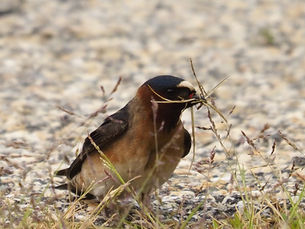
Welcome to the Cliff Swallow Project
Discover One of North America's Longest-Running Bird Field Studies



Introduction
The Cliff Swallow Project, now in its 43rd year, is the longest-running field study of birds in North America. Explore the latest news about cliff swallows, delve into our ongoing and past research, access scientific papers resulting from our findings, and learn about the natural history of these fascinating birds. Find answers to frequently asked questions to deepen your understanding of this species and its intricate social dynamics.
About Cliff Swallows
Species Overview
Among the most highly social land birds in the world, cliff swallows inhabit large colonies, historically constructing their characteristic gourd-shaped mud nests beneath cliff ledges across western North America. Colonies can host up to 6000 nests, although some birds nest as solitary pairs or in smaller groups. In recent years, they've adapted to new nesting environments, including creating colonies beneath building eaves and bridges and expanding their range into previously unoccupied regions of eastern North America.
Our Field Study
Research Origins
We began our field study of cliff swallows in western Nebraska in 1982. Our study area is home to around 300 cliff swallow colonies of varying sizes each summer and encompasses what is likely the densest population of this species on the continent. These birds exhibit remarkable adaptations to a colonial lifestyle, prompting our investigation into the reasons behind their group living and the implications of colony size variation. Through our research, we aim to address fundamental questions in animal behavior and evolutionary ecology.










